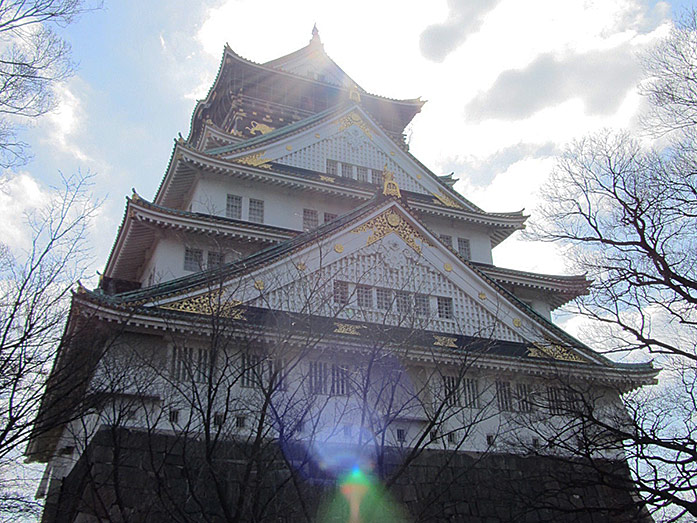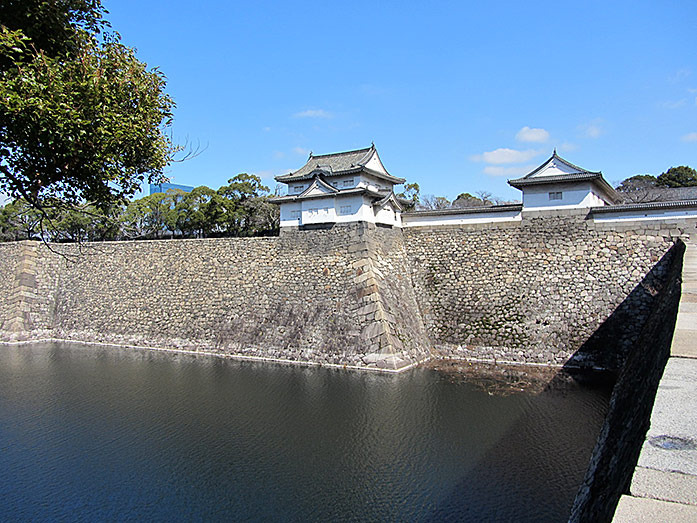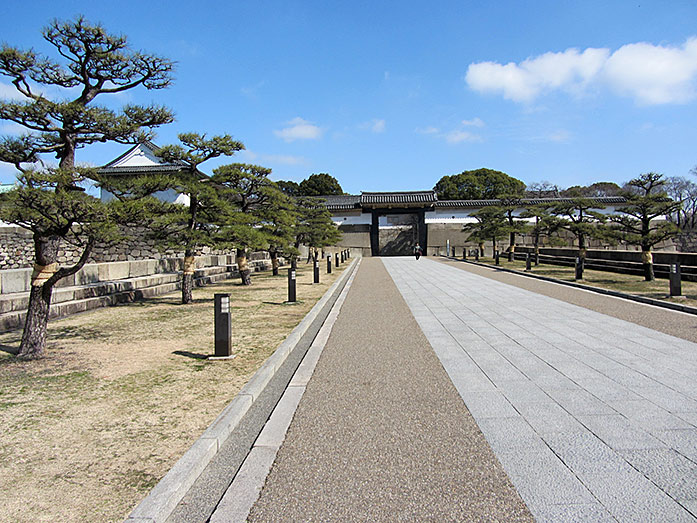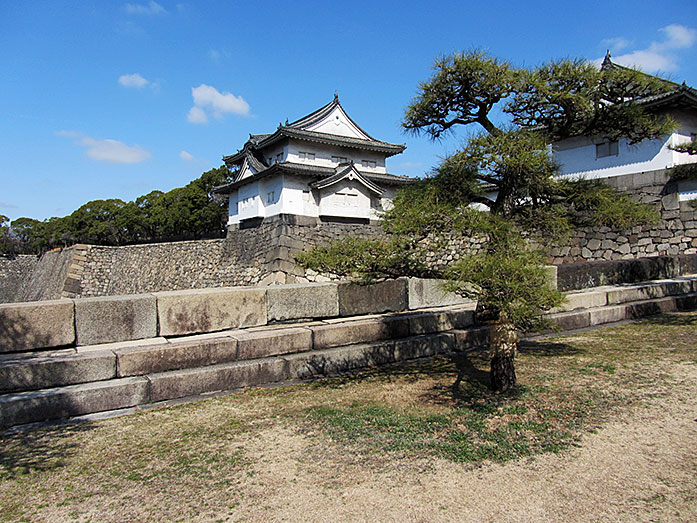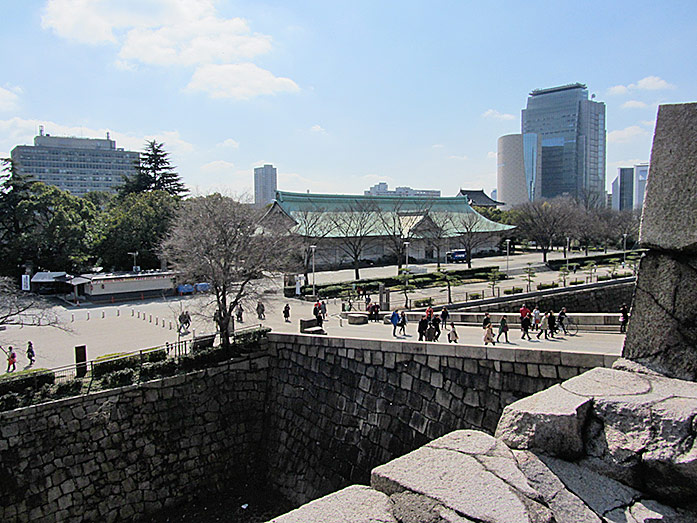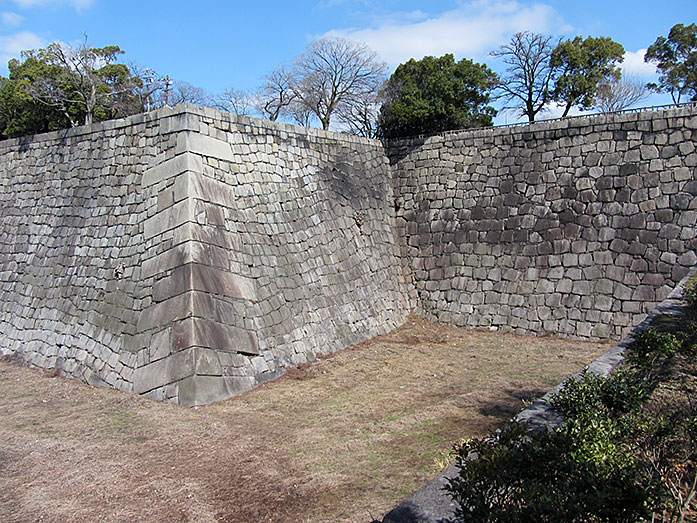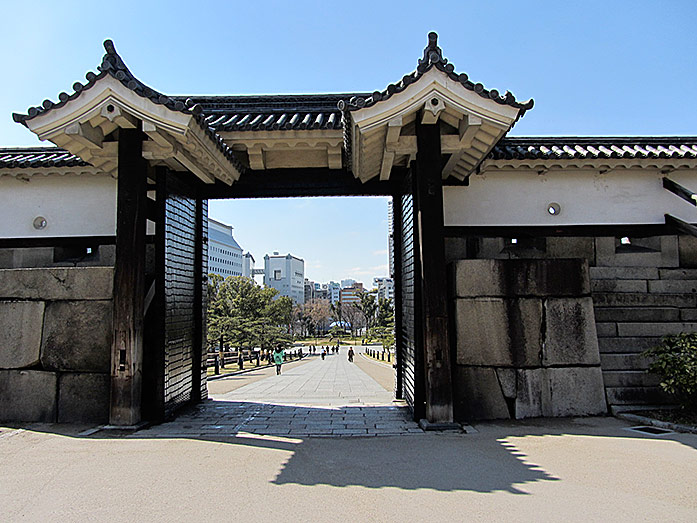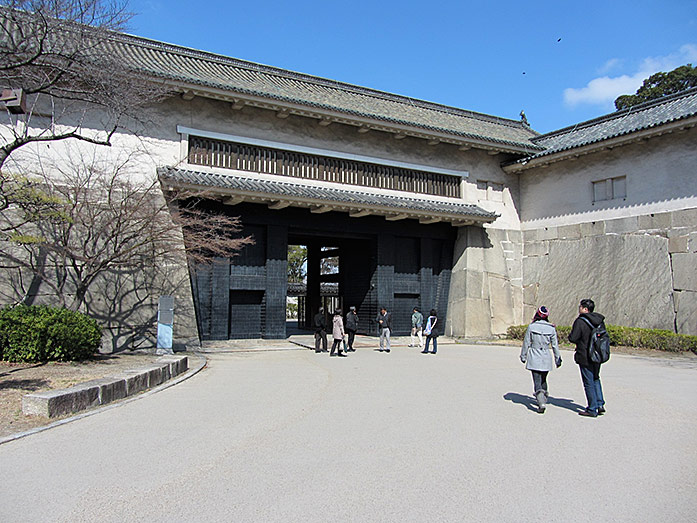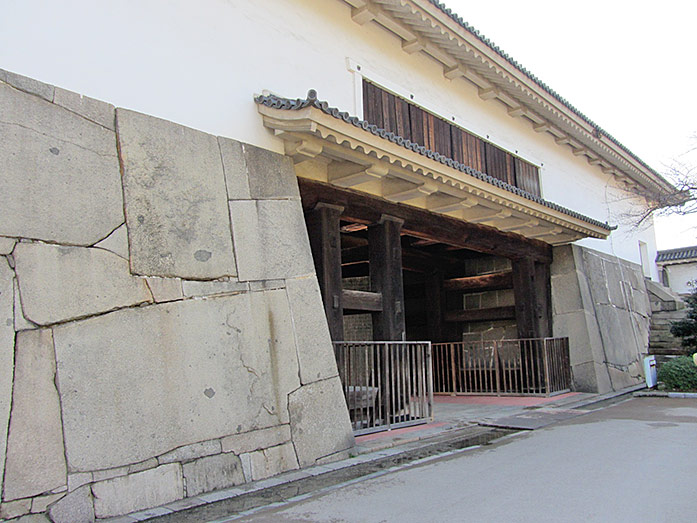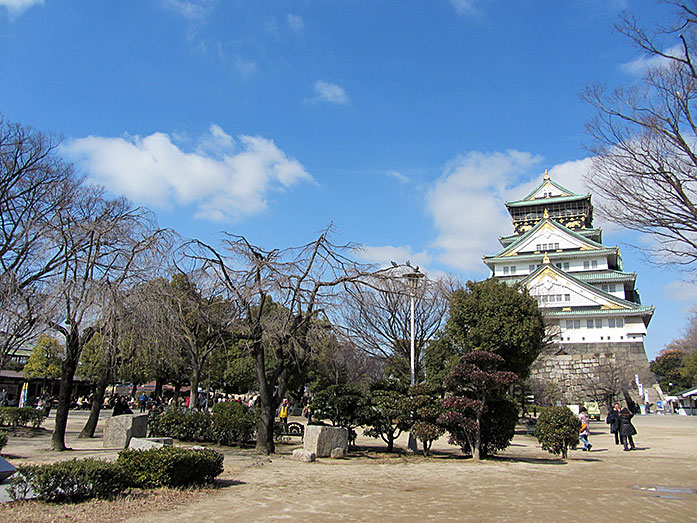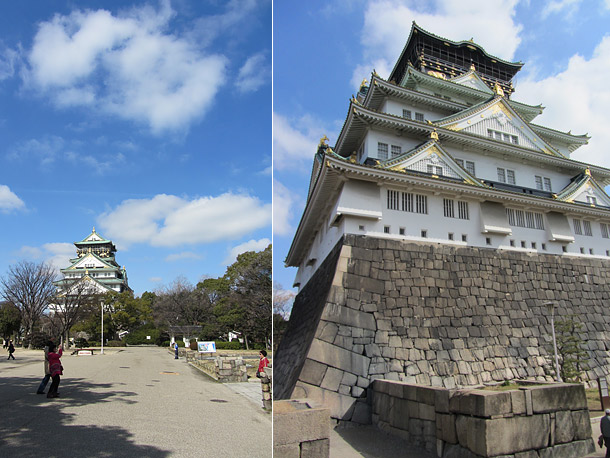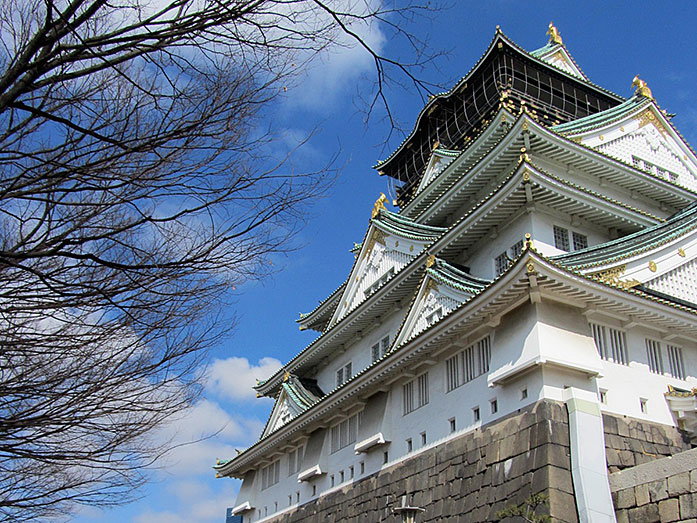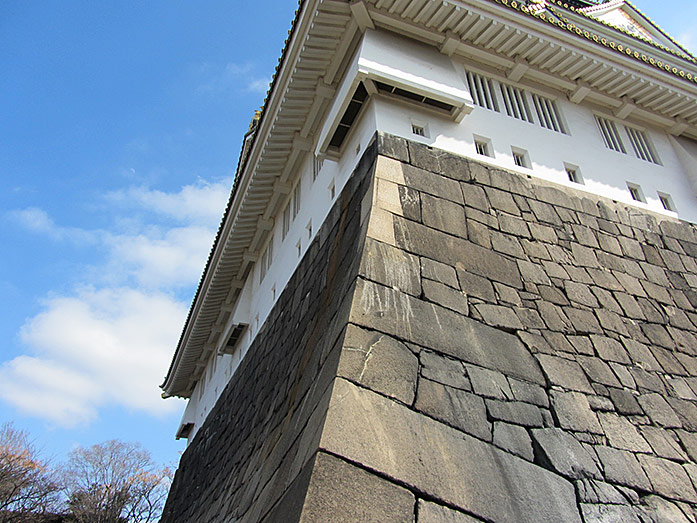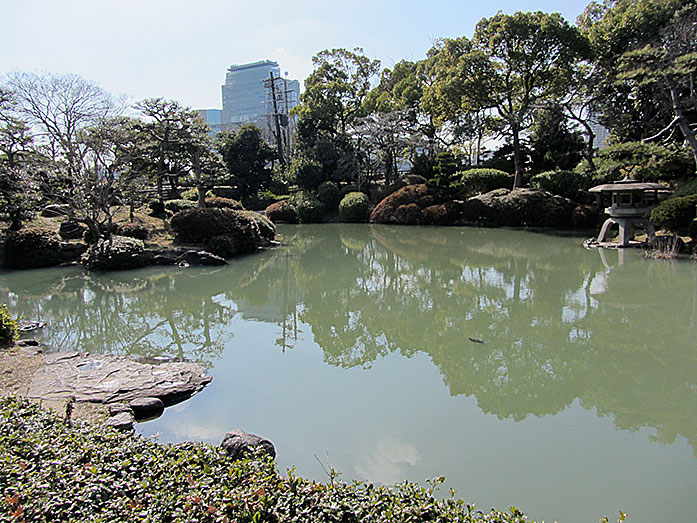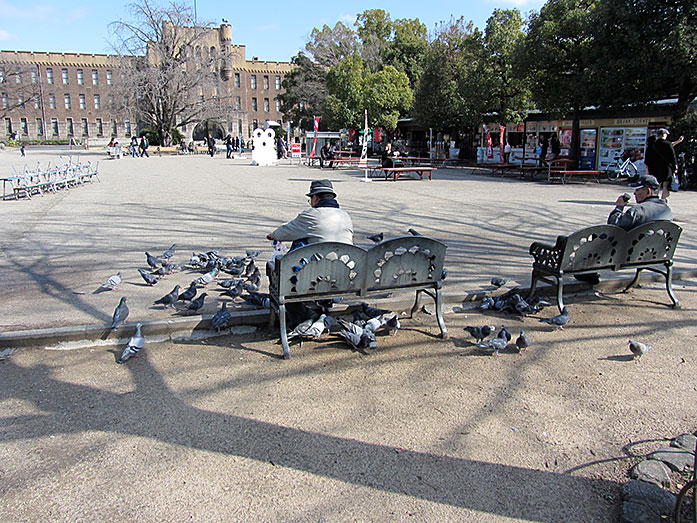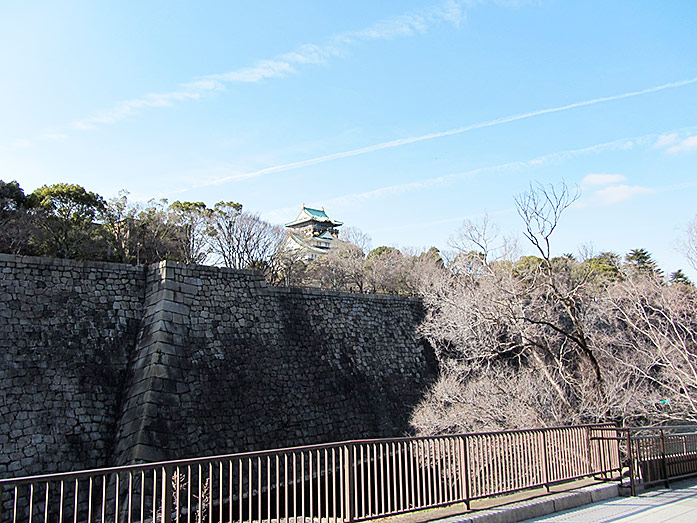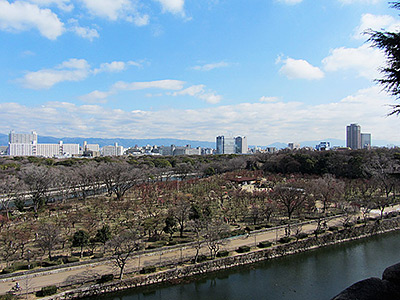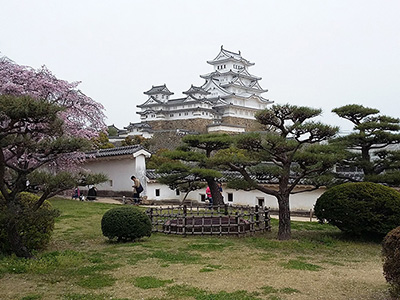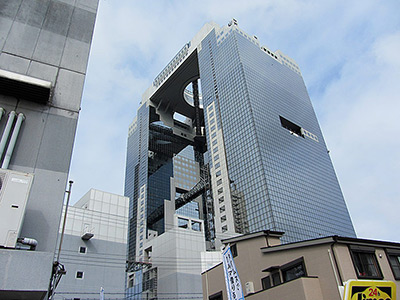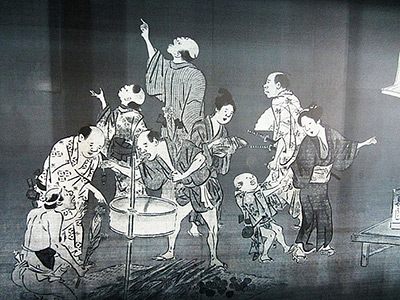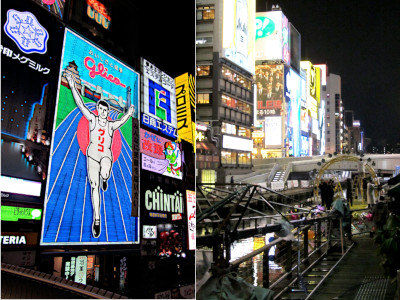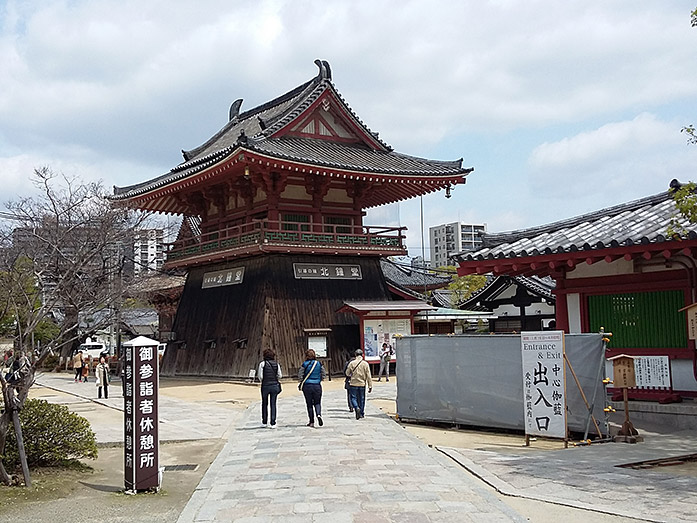Osaka Castle
This post can contain affiliate links, which means that we may receive a small commission if you make a purchase using these links.
Facts & Figures
Osaka Castle is one of the most famous castles in Japan. It is the iconic symbol of Osaka and a very popular sightseeing spot. Some people are attracted to the castle for the beautiful ume blooms, while others go there to discover the rich history of Japan.
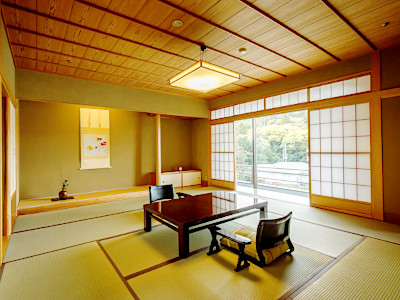 Best Places to Stay in Osaka >
The castle played a significant role in the unification of Japan during the grueling Samurai era that lasted throughout the sixteenth century. The castle grounds of the Osaka Castle are vast spanning an area of 60,000 square meters. It has a total of 13 magnificent structures which include turrets and well-decorated gates that have been declared significant cultural assets by the Japanese government. Needless to say, if you want to enjoy the grounds, there is a lot of walking involved.
The castle tower and museum are the most dominant structures. A visit to the museum is necessary if you are interested in learning about how the feudal era operated. The museum also has various exhibitions such as the Golden Tea Room whose interior is adorned with gold accessories from the ceiling and pillars to the wares in which the tea is served. There is also an observation deck that can give visitors a vantage point if they want to look over the city. Other spots to explore include the Gokurakubashi Bridge, the Former Japanese Imperial Army Headquarters, the castle wall and yagura (turret) and the Ote-guchi-masugata Square among others.
Best Places to Stay in Osaka >
The castle played a significant role in the unification of Japan during the grueling Samurai era that lasted throughout the sixteenth century. The castle grounds of the Osaka Castle are vast spanning an area of 60,000 square meters. It has a total of 13 magnificent structures which include turrets and well-decorated gates that have been declared significant cultural assets by the Japanese government. Needless to say, if you want to enjoy the grounds, there is a lot of walking involved.
The castle tower and museum are the most dominant structures. A visit to the museum is necessary if you are interested in learning about how the feudal era operated. The museum also has various exhibitions such as the Golden Tea Room whose interior is adorned with gold accessories from the ceiling and pillars to the wares in which the tea is served. There is also an observation deck that can give visitors a vantage point if they want to look over the city. Other spots to explore include the Gokurakubashi Bridge, the Former Japanese Imperial Army Headquarters, the castle wall and yagura (turret) and the Ote-guchi-masugata Square among others.
- Osaka Castle:
- Opening Hours - 9:00 am to 5:00 pm (last entry 4:30 pm)
- Admission Fee - 600 yen (adults), free (Junior high school student and Under)
My tips for local activities
How about exploring the highlights and hidden gems of the fascinating Osaka Castle with a local guide. Check out this page > for more details.
History
Even before the castle helped to draw thousands of visitors to the Osaka region, the land on which the castle sits was influential. For instance, in 1496, a prominent Buddhist monk had a monastery constructed next to the site of the castle. The temple later developed into a large, well-known temple called the Osaka Ishiyama Hongan-ji. The influence of the temple became an issue to the feudal leaders of that time, as well as to Nobunaga Oda who was the first great unifier of Japan. This led to the destruction of the Osaka Honganji Temple when it was burnt to the ground during his unification campaign. It was not until the death of the leader that construction of the Osaka Castle begun in 1583. The castle was built under the leadership of Toyotomi Hideyoshi (1537 - 1598), who acted as the second great unifier and Japan’s first Shogun. The castle would serve as the permanent residence of the ruler. In 1615 after Toyotomi’s death, the castle was taken over by the Tokugawa clan that finally unified the country under the rule of Tokugawa Ieyasu. In the following years the castle itself was destroyed by fire and rebuilt many times. The castle was renovated after WWII to become the large beautiful castle that people enjoy and appreciate today. In 1955 the national government declared Osaka Castle as a "Special Historic Site". In 1997, after 2 years of restoration work, the main tower got his Edo time appearance back.
Location

The Osaka Castle is located in Chuo-ku (ward), Osaka.
How to get to Osaka Castle?
- 5min from Tanimachi 4-chrome Station served by Tanimachi and Chuo Subway Line or
- 10min from JR Osaka Station to Osakajokoen Station by JR Loop Line
- 15min from Osakajokoen Station (Exit No. 3) to Osaka Castle (Otemon Gate entrance)
Sightseeing spots
Thirteen important cultural structures belong to the castle grounds:
Sakuramon Gate - The main gate of the Honmaru (Inner Baily) is an important cultural property of Japan. It was built in 1626 during the Edo period (1603 - 1868). Sakuramon Gate was destroyed by a fire in 1868. With the support of the army it was reconstructed in 1887. The gigantic stones on the left and right sides of the gate are called Ryukoishi. This stands for dragon and tiger stones. The largest stone in the Osaka Castle is known as Takoishi (octopus stone). Its weight is 108 tons and measuring 59.43 square meters. Next to it is the third largest stone of the castle located. Its name is Furisodeishi (long-sleeved kimono stone).
Otemon Gate - The western gate was built in 1628 during the Edo period (1603 - 1868) by the order of Shogun Tokugawa Hidetada (1579 - 1632). It is the main entrance of Osaka Castle. The architectural style is called Koraimon. The massive and thick iron doors were the perfect protection against attacks of enemies.
Rokuban Turret (Rokuban-Yagura) - The name rokuban stands for - sixth. The two-storied turret was constructed in 1628. In 1945 the structure got damaged during bomb attacks in World War 2 and even more during a typhoon in 1950. It was later restored to its former glory. The same architectural style can also be found at Osaka Castles Ichiban Turret (Ichiban-Yagura).
Ichiban Turret (Ichiban-Yagura) - The name ichiban means first. The two-storied turret was built during the early Edo period in 1628. It was part of seven turrets located on the south of the Ni-no-maru (Outer Bailey). Only the first and sixth turret (Rokuban-Yagura) remain today.
Inui Turret (Inui-Yagura) - Inui-Yagura is located near the Kyobashi-mon Gate and was built in the 1620s. It is part of the nine miles long outer wall and moat of Osaka Castle.
Sengan Turret (Sengan-Yagura) - The turret was built in 1620 by architect Kobori Enshu (1579 - 1647). It is one of the oldest surviving structures of the castle. Sengan-Yagura is located near the Oote-mon Gate.
Tamon Turret (Tamon-Yagura) - The turret was originally built in 1628. In 1783 it was destroyed by lightning and reconstructed in 1848. Major restoration work was done in 1969. Tamon-Yagura is the largest remaining turret of this kind in the country and covers over 600 square meters. It is located atop the stone walls of Ote-mon Gate on the western side of Osaka Castle.
Kinmeisui Well - The well is dating back to 1624 and its roof was built in 1626. The depth till the water surface is about 33 meters. Its original name was Ogonsui (golden water) and it was the most important water place within the castle.
Kinzo Storehouse - The storehouse was constructed in 1751 by the Tokugawa Shogunate. It was used as a treasure house to store gold and silver coins within Osaka Castle. Kinzo Storehouse was also called shin-gokinzo (new kinzo) as it replaced an older kinzo (moto-gokinzo).
Enshogura Gunpowder Magazine - Enshogura was made out of stone in 1685 for the storage of gunpowder, after a previous wooden building exploded in 1660.
3 wall sections around Otemon Gate - These three wall sections have been designated as important cultural assets by the Japanese government.
more to see:
Osaka Castle Museum - The castle tower contains now an informative museum about the castle's history and famous daimyo Toyotomi Hideyoshi (1537 – 1598). Many artifacts are on display.
Osaka Castle Museum - Observation Deck - Enjoy the amazing view from the observation deck 50m above the ground.
Takoishi (Ocotopus Stone) - It is the largest single stone in the castle wall (108 tons) nearby the Sakuramon Gate.
Festival & Events (dates can change without notice)
July
Tenjin Matsuri Festival (24th till 25th)
Osaka’s greatest traditional festival (over 1000 years old) and ranked as one of the top 3 festivals in Japan. Enjoy spectecular processions on land and in the water, great fireworks and a unique atmosphere created by the traditional costumes and music. My must-see recommendation for you.
August
Osaka lantern festival / Osaka Jo Lanterns (25th and 26th)
Osaka Castle (Osaka-jo) is once a year decorated with thousands of lanterns lit at its doorstep. Buy your own lantern and be part of this great event.

